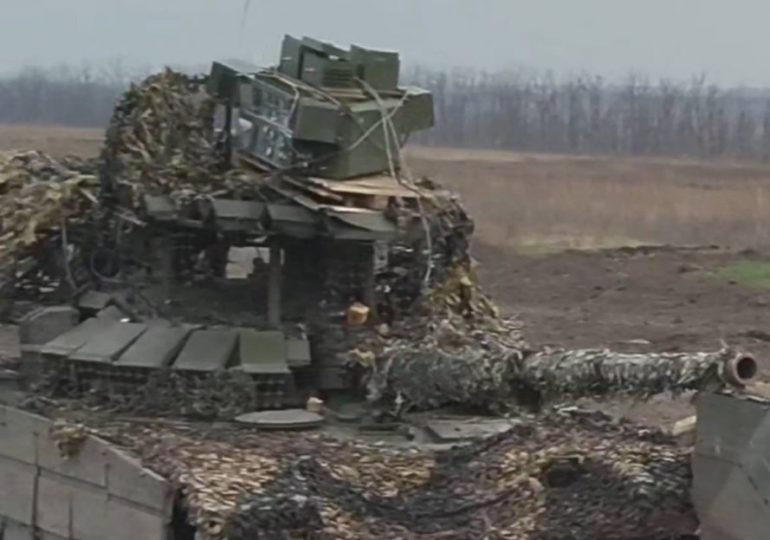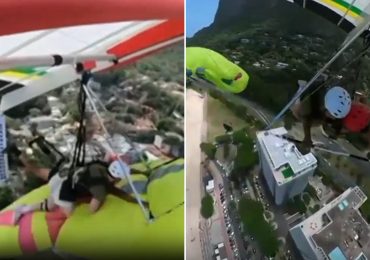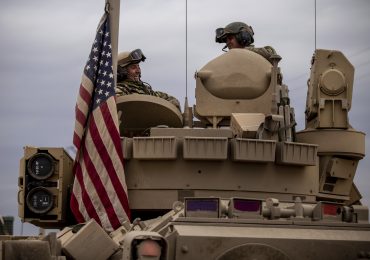AN elite Ukrainian unit staged a daring three-day mission to capture a £1million Russian tank suspected of carrying secret technology.
The 12th Azov brigade had one goal – risk their lives to sneak across the frontline and steal a T-72 that Kyiv feared was able to repel its drones.
TwitterThe special Russian T-72 trapped in no man’s land that Ukraine desperately wanted captured[/caption]
TwitterIt had a ‘makeshift’ mass of radio transmitters and antennae strapped to it to try and repel drones[/caption]
azov mediaThe moment the elite unit of Azov soldiers managed to drive the tank into Ukraine[/caption]
Sometime in early April, a T-72 tank rolled onto the frontline near Terny in eastern Ukraine’s Donetsk region. It collided with a fighting vehicle and got stuck in barbed wire.
Ukraine immediately hit its sitting duck target with an FPV drone. Its three-person crew were killed as they bailed out, but the tank was sustained only minimal damage.
And Kyiv desperately wanted it.
In 26 months of war, Russia has lost 2,600 T-72s, but this one had a bizarre mass of antennae and transmitters strapped to its turret.
The improvised electronic warfare system looked like it might be trying to block radio signals between the attack drones and their operators.
But the jammer hadn’t worked and Ukraine needed to know why.
In the war of the drones, it is a constant scramble for both sides to stay one step ahead in repelling enemy electronic warfare and launch their own jamming.
The fearsome 12th Azov Brigade were ordered to make three dangerous nighttime assaults into no man’s land to capture the abandoned tank, reports The Telegraph.
The crack unit had to untangle the tank from a mess of barbed wire, replace its batteries and clear all mines planted in its path.
Then, the T-72 had to be driven across bomb-blitzed terrain to Ukraine while being shot at by Russian artillery.
There were reportedly near-misses, but the tank and team made it back in one piece.
What they found wasn’t a fearsome new jamming weapon, but a taped-together mismatched jumble of antennae and transmitters.
An Azov commander understatedly labelled as “makeshift”.
Russia has faced criticism of its electronic warfare systems at the front in the past – often badly-made and badly-assembled – that offer little protection against cheap, enemy drones.
TwitterBefore it was stolen, the T-72 had collided with a fighting vehicle and got stuck before being targeted by an FPV drone[/caption]
azov mediaThe Azov fighters quickly drove the tank to safety, dodging Russian artillery[/caption]
azov mediaThe brave troops looking pleased their prize after the raid[/caption]
azov mediaMore footage, published by the Azov brigade, showing the captured Russian T-72[/caption]
Suffering from a loss of artillery, Ukraine has been heavily relying on first-person-view (FPV) drones — kamikaze unmanned aerial vehicles (UAVs) to hunt down the enemy and blast its tanks.
Over two thirds of Russian tanks destroyed by Ukraine in recent months have been taken out using FPV drones, a Nato official told Foreign Policy.
They’re also being constantly adapted and upgraded as Ukraine’s military learns from each new battle.
The head of Kyiv’s attack drone operations, “Arsenal”, recently told The Sun that FPV’s were blitzing three out of five of its targets on the battlefield.
He called FPVs “our sword, our strike force,” and added that: “Absolutely every drone, even the ones that fall under the influence of Russian electronic jamming, save lives.”
However, after suffering serious losses, Russia is now attempting to overcome Ukraine’s technological success with battle armour.
Moscow‘s forces are now readily fitting anti-drone armour, including steel cages dubbed “mobile sheds”, to their tanks and combat vehicles.
A typical FPV drone carries only a one pound explosive payload which may not be able to penetrate its steel shield.
But the killing qaudcopters are constantly being adapted and upgraded as Ukraine’s military learns from each new battle.
Special ops warrior Arsenal told The Sun that while Ukraine “is certainly not far behind Russia” in terms of drone warfare, “we lag behind in the number of drones and in their intensity”.
When Ukraine’s new commander in chief, General Syrskyi, was appointed in February he warned that the only way to defeat Russia would be to achieve a technological edge.
Setting a new battle agenda, he argued that mastering drone warfare and developing more sophisticated weapons would allow Kyiv “to seize the strategic initiative” from a better equipped and larger foe.
In 2023, Ukraine’s goal was to procure 200,000 drones. For 2024, Zelensky vowed they would build a million themselves.
Between January and February this year, officials revealed FPV production already totalled 200,000.
Ukraine is also counting on key allies to send them more expensive, high-tech drones, but deliveries are not anywhere near the sufficient scale needed.
In March, the UK announced they will supply Kyiv with 10,000 drones – 1,000 of which are FPVs – throughout 2024.
Ukrainian civilians are building FPVs in their kitchens, while organisations are crowdsourcing donations for new drone fleets.
However, experts have frequently warned that the kamikaze drones cannot replace artillery units – which Ukraine is desperately short on.
A drone operator within Ukraine’s 36th Marine Brigade, known as “Kriegsforscher,” backed this up with his experience at the front.
Writing on X, he said: “Unfortunately, we use so much FPV drones because of lack of ammo for mortars, ATGMs, artillery and even anti-tank mines.
“They are cheap and very effective, first of all, against enemy logistics. That’s out of the question and they are really needed.”
But deliveries of US weapons are due to start within days after Republican congressmen finally ended a five-month deadlock in the House of Representatives.
POV footage showed the moment an FPV drone – which Ukraine now relies on to hold off Russia’s advance – going in for the kill earlier this year
The suicide UAV detonates as it smahses into the £1million Russian T-72 tank and tears it apart
Ukraine promised to build a million of its own drones in 2024
Their highly-skilled operators can be stationed safely away from the frontline in a bunker or building
Leave a comment








